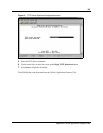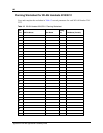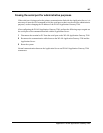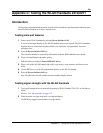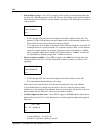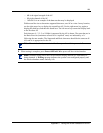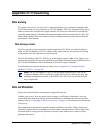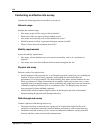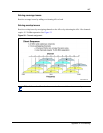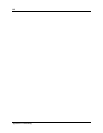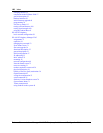
114
Appendix D: Provisioning
Conducting an effective site survey
Consider the following points for an effective site survey.
Network usage
Examine the network usage:
• How many people will be using a wireless handset?
• What areas of the site require wireless handset access?
• How many hours each day will wireless handsets be in use?
• Which locations are likely to generate the largest amount of traffic?
• Where is future network expansion most likely?
Mobility requirements
Assess the mobility requirements:
• How many wireless handset users are in motion continually, such as in a warehouse or
hospital?
• How many users work from different fixed locations throughout the site?
Physical site study
Perform a study of the physical site:
• Study blueprints of the proposed site. A site blueprint provides a map of the site, including the
location of objects such as walls, partitions, and anything else that could affect the
performance of a wireless handset. This helps identify areas where wireless handsets are less
likely to perform well. Many obstructions are not readily visible and, in some cases, a room
originally built for a specific purpose, such as a radiology lab, might have been converted into
something completely different, such as a conference room. The blueprint may also show
areas proposed for future building expansion.
• Mark possible wireless handset usage locations on the blueprint and refer to the marked
blueprint during the physical walk-through and survey.
Walk-through and survey
Conduct a physical walk-through and survey:
• Document any items or materials near a proposed AP location that might interfere with
reception or transmission and affect wireless handset performance, such as metal shelving.
• Document stock and inventory levels, current environmental conditions, and any materials
that may interfere with wireless handset transmissions.



